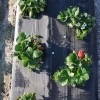 Esta publicación se enfoca en el uso del riego localizado para mejorar los sistemas de producción. This 5-page fact sheet was written by Lincoln Zotarelli, Clyde Fraisse, and Daniel Dourte, and published by the UF Department of Horticultural Sciences, January 2013.
Esta publicación se enfoca en el uso del riego localizado para mejorar los sistemas de producción. This 5-page fact sheet was written by Lincoln Zotarelli, Clyde Fraisse, and Daniel Dourte, and published by the UF Department of Horticultural Sciences, January 2013.
http://edis.ifas.ufl.edu/hs1212
Tag: Agricultural Management Options for Climate Variability and Change series
Agricultural Management Options for Climate Variability and Change: High-Residue Cover Crops (AE488)
 While decision making in agriculture involves many aspects beyond climate, including economics, social factors, and policy considerations, climate-related risks are a primary source of yield and income variability. This 4-page fact sheet focuses on the use of high-biomass winter cover crops to improve production systems. Written by Joel Love, Jed Dillard, Kirk Brock, Daniel Dourte, and Clyde Fraisse, and published by the UF Department of Agricultural and Biological Engineering, August 2012.
While decision making in agriculture involves many aspects beyond climate, including economics, social factors, and policy considerations, climate-related risks are a primary source of yield and income variability. This 4-page fact sheet focuses on the use of high-biomass winter cover crops to improve production systems. Written by Joel Love, Jed Dillard, Kirk Brock, Daniel Dourte, and Clyde Fraisse, and published by the UF Department of Agricultural and Biological Engineering, August 2012.
http://edis.ifas.ufl.edu/ae488
Agricultural Management Options for Climate Variability and Change: Variable-Rate Irrigation (AE490)
 Most fields are not uniform because of natural variations in soil type or topography. When water is applied uniformly to a field, some areas of the field may be overwatered while other areas may remain too dry. Variable-rate irrigation technology gives farmers an automated method to vary rates of irrigation water based on the individual management zones within a field and avoid irrigating roadways, waterways, wetlands, and other non-farmed areas within a pivot. This 3-page fact sheet was written by Calvin Perry, Clyde Fraisse, and Daniel Dourte, and published by the UF Department of Agricultural and Biological Engineering, July 2012.
Most fields are not uniform because of natural variations in soil type or topography. When water is applied uniformly to a field, some areas of the field may be overwatered while other areas may remain too dry. Variable-rate irrigation technology gives farmers an automated method to vary rates of irrigation water based on the individual management zones within a field and avoid irrigating roadways, waterways, wetlands, and other non-farmed areas within a pivot. This 3-page fact sheet was written by Calvin Perry, Clyde Fraisse, and Daniel Dourte, and published by the UF Department of Agricultural and Biological Engineering, July 2012.
http://edis.ifas.ufl.edu/ae490
Agricultural Management Options for Climate Variability and Change: Sensor-Based, Variable-Rate Nitrogen Management (AE487)
 Nitrogen fertilizer cost represents about 10%–15% of total farm costs for corn, cotton, and wheat in the Southeastern United States. The efficiency of nitrogen use can be highly variable for producers, so a sensor-based, variable-rate nitrogen application (SVNA) system has been developed for irrigated and dryland row crops to reduce production costs. Using sensor-based N application, there is a minimum 20% reduction in N usage. If that rate reduction were applied to all the cotton, corn, and wheat grown in the United States, CO2 emissions from N fertilizer production would be decreased by 2.7 million tons.
Nitrogen fertilizer cost represents about 10%–15% of total farm costs for corn, cotton, and wheat in the Southeastern United States. The efficiency of nitrogen use can be highly variable for producers, so a sensor-based, variable-rate nitrogen application (SVNA) system has been developed for irrigated and dryland row crops to reduce production costs. Using sensor-based N application, there is a minimum 20% reduction in N usage. If that rate reduction were applied to all the cotton, corn, and wheat grown in the United States, CO2 emissions from N fertilizer production would be decreased by 2.7 million tons.
This 4-page fact sheet was written by Wesley Porter, Ahmad Khalilian, Daniel Dourte, and Clyde Fraisse, and published by the UF Department of Agricultural and Biological Engineering, July 2012.
http://edis.ifas.ufl.edu/ae487
Agricultural Management Options for Climate Variability and Change: Microirrigation (HS1203)
 Microirrigation is the slow, frequent application of water directly to relatively small areas adjacent to individual plants through emitters placed along a water delivery line. A leading advantage of microirrigation is that evaporation that does not contribute to plant growth much less than with sprinkler irrigation. This 5-page fact sheet was written by Lincoln Zotarelli, Clyde Fraisse, and Daniel Dourte, and published by the UF Department of Horticultural Sciences, July 2012.
Microirrigation is the slow, frequent application of water directly to relatively small areas adjacent to individual plants through emitters placed along a water delivery line. A leading advantage of microirrigation is that evaporation that does not contribute to plant growth much less than with sprinkler irrigation. This 5-page fact sheet was written by Lincoln Zotarelli, Clyde Fraisse, and Daniel Dourte, and published by the UF Department of Horticultural Sciences, July 2012.
http://edis.ifas.ufl.edu/hs1203
Agricultural Management Options for Climate Variability and Change: Conservation Tillage (AE486)
 This 4-page fact sheet focuses on the use of conservation tillage in crop production systems as a strategy to minimize the risks associated with climate variability and change and to improve resource-use efficiency. Written by Kip Balkcom, Leah Duzy, Daniel Dourte, and Clyde Fraisse, and published by the UF Department of Agricultural and Biological Engineering, June 2012.
This 4-page fact sheet focuses on the use of conservation tillage in crop production systems as a strategy to minimize the risks associated with climate variability and change and to improve resource-use efficiency. Written by Kip Balkcom, Leah Duzy, Daniel Dourte, and Clyde Fraisse, and published by the UF Department of Agricultural and Biological Engineering, June 2012.
http://edis.ifas.ufl.edu/ae486